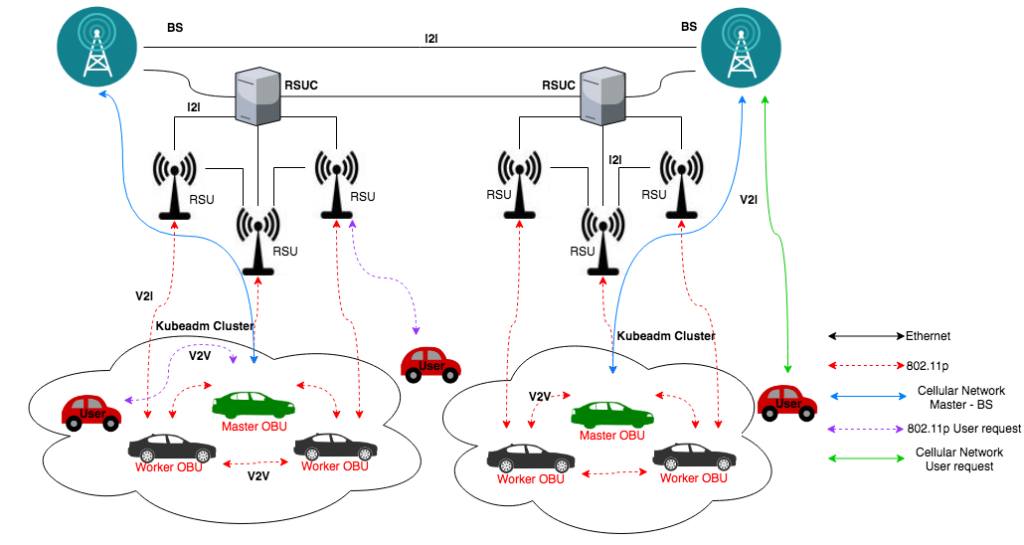Vehicular-OBUs-As-On-Demand-Fogs: Resource and Context Aware Deployment of Containerized Micro-Services
- Post by: Hani Sami
- 25 June 2021
- Comments off
Abstract
Observing the headway in vehicular industry, new applications are developed demanding more resources. For instance, real-time vehicular applications require fast processing of the vast amount of generated data by vehicles in order to maintain service availability and reachability while driving. Fog devices are capable of bringing cloud intelligence near the edge, making them a suitable candidate to process vehicular requests. However, their location, processing power, and technology used to host and update services affect their availability and performance while considering the mobility patterns of vehicles. In this paper, we overcome the aforementioned limitations by taking advantage of the evolvement of On-Board Units, Kubeadm Clustering, Docker Containerization, and micro-services technologies. In this context, we propose an efficient resource and context aware approach for deploying containerized micro-services on on-demand fogs called Vehicular-OBUs-As-On-Demand-Fogs. Our proposed scheme embeds (1) a Kubeadm based approach for clustering OBUs and enabling on-demand micro-services deployment with the least costs and time using Docker containerization technology, (2) a hybrid multi-layered networking architecture to maintain reachability between the requesting user and available vehicular fog cluster, and (3) a vehicular multi-objective container placement model for producing efficient vehicles selection and services distribution. An Evolutionary Memetic Algorithm is elaborated to solve our vehicular container placement problem. Experiments and simulations demonstrate the relevance and efficiency of our approach compared to other recent techniques in the literature.
Authors’ Notes
In this paper, we overcome the aforementioned limitations by proposing Vehicular-OBUs-As-On-Demand-Fogs. We make use of one of the well-known containerization technologies, Docker, to deploy our services on OBUs on the fly while transforming cars to fog devices. Vehicles in our architecture form a cluster that can host micro-services related to one service or more. The advantage of micro-services can be summarized as a lighter load on small machines, enabling distributed processing, and easier build and maintenance for applications. These clusters are managed by orchestrators/masters using Kubernetes utility Kubeadm. We also adopt a technique proposed in to provide a long-time stable connectivity between users and serving clusters. To the best of our knowledge, we are the first to propose a scheme that uses OBUs and personal devices to host fogs embedding containers of micro-services on the fly, and at the same time, provide long term support for moving users regardless of their connection status. Through our approach, we can open the door for a new development area serving the new generation of vehicular applications.

The main contributions of this paper can be summarized as:
- Proposing a novel Vehicular-OBUs-As-On-Demand-Fogs framework that efficiently initializes clusters of vehicles to benefit from OBUs and on-board resources to push and manage services with the least possible costs.
- Building an efficient and adaptable networking architecture combining cellular technologies and the vehicular ad-hoc wireless network (802.11p) to maximize the connection time between vehicles.
- Formulating and solving a resource selection and micro-services placement problem on clusters of vehicles, named “Vehicular Container Placement (VCP)”, and adapt its evaluation to different scenarios such as the number of pushed services, micro-services connection time, cluster lifetime, and the number of active vehicles.
